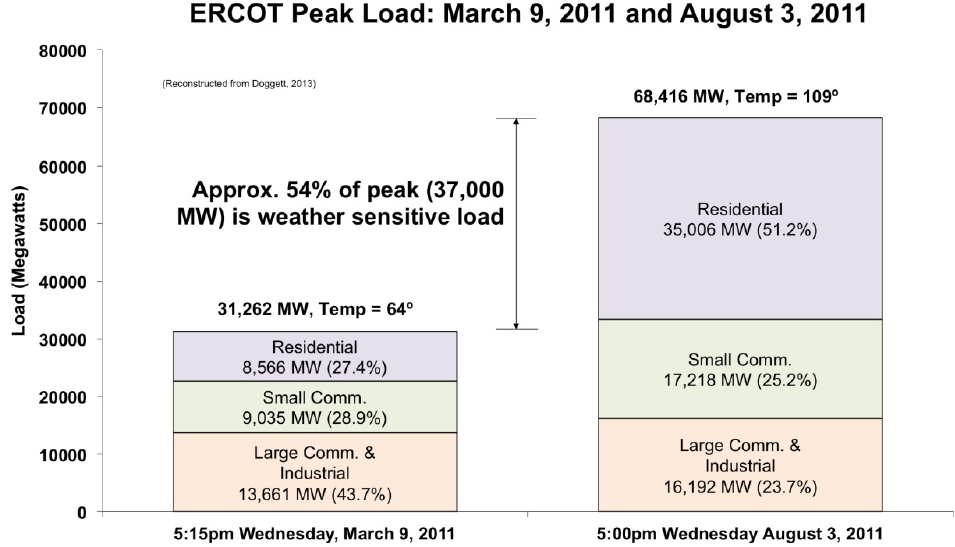Commercial and residential buildings account for more than 40% of primary energy consumption in the United States, including 70% of all electricity. Much of this energy, particularly during peak weather events, is used by residential or small commercial building environmental loads (Figure 1). The ability to shift these peak environmental heating and cooling loads to off-peak periods, or to periods where “free” or low-cost energy is available, can reduce building energy costs and environmental impacts. Time shifting of peak energy loads can also improve returns on capital investments for electric generation by ensuring equipment is optimally sized and full utilized. Additionally, time shifting of peak energy loads can allow a move towards an as-available—rather than as-needed—energy consumption model, which can help mitigate the uncertainty associated with the increased use of intermittent renewable energy sources like wind and solar power.
Actively controlled thermal energy stores can provide the means necessary to time-shift building environmental loads, charging during periods of low electricity costs or high availability and discharging when electricity is scarce or expensive. These storage systems are simple to integrate into common environmental control system designs. However, while new buildings can be designed to accommodate existing fluid-based thermal storage technologies, the needed storage tanks are too large to incorporate into existing residential or small commercial buildings.
Researchers at The University of Texas at Austin have developed a simple-to-manufacture, PCM-based latent thermal energy storage system with high energy density. This design produces a thermal storage system two to seven times smaller than a conventional chilled-fluid storage solution, allowing for retrofit into existing residential and small commercial buildings. This system can be used to time-shift building environmental energy loads to optimize energy use and costs, and time-average building environmental loads allowing for the specification of smaller and more efficient HVAC systems.

Figure 1. Electric Reliability Council of Texas peak loads for March 3 and August 3 of 2011. This figure demonstrates that the weather-sensitive portion of peak summer electric load in Texas is primarily due to residential and small commercial HVAC demand. This load can be time-shifted using local thermal storage systems, reducing peak electric power consumption and operating costs while allowing for the use of smaller, more efficient HVAC systems.

